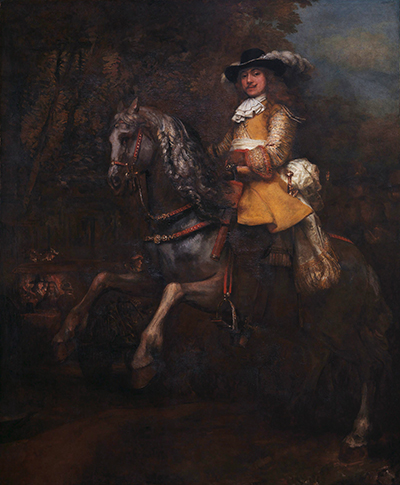Equestrian portraits were a common sight throughout the Renaissance and Baroque periods, with soldiers and royalty commissioning portraits that symbolised strength and status
Rembrandt van Rijn, however, was not someone to make use of this genre often, though. His Equestrian Portrait of Frederick Rihel, from 1663, is therefore significant in outlining how this master addressed such content. Rembrandt needed to consistently bring in work in order to finance his growing art collection, though this was later sold off on the cheap after his bankruptcy.
Many of Rembrandt's commissions were from Amsterdam-based merchants and Rihel was another of these. Originally from Strasbourg, he was also an official of the civil guard and was not short of financial clout or political influence. The scene captured here is possibly his role in the procession that greeted the Prince of Orange to the Dutch capital.
Frederick Rihel's attire is consistent with a ceremonial display, with gold thread decorating his elaborate sleeves. He also holds a sword and pistol as a symbolic gesture, boasting strength as he sits up on his horse. Some have argued that the stiff nature of the horse suggests it was not the work of Rembrandt, but this is most likely explained by the fact that he rarely painted such animals.
George Stubbs is considered by many to have been the most skilled artist with regards portraits of horses, going to extraordinary lengths in order to accurately depict these beautiful animals. He would dissect horses and study their internal structures in order to better understand their movement and shape.




